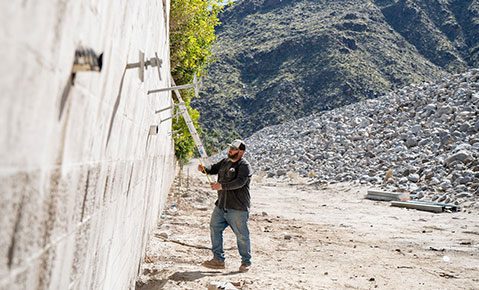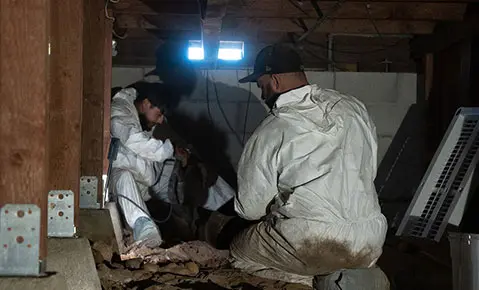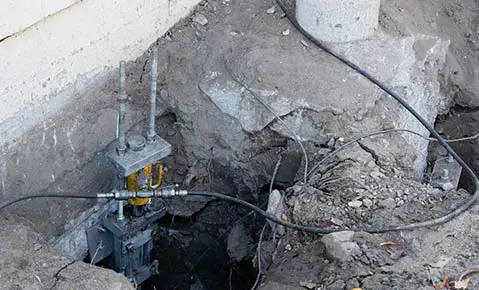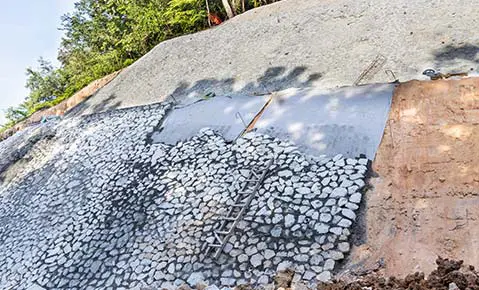The ugly truth is sometimes foundation repair contractors don’t deliver, either because they’ve gone out of business, failed to meet the contractual quality standard,s or simply failed to stick to the project completion date.
And sometimes foundation repair companies disappear. Go dark. Vanish like a protagonist in a John Grisham Novel.
The phone has been disconnected. The website is down. None of your emails are returned. They might have taken your money and run.
So, what do you do when a foundation repair contractor you just shelled out a 10k deposit to does a Houdini and skips out of town? Or what do you do when the company you signed a contract with simply isn’t returning your calls, emails, texts, and smoke signals.
In this article, we suggest you:
- Reach back out (establish communication if possible)
- Always CYB via documentation (cover your butt)
- Fire or Rehire (the job still needs to get done)
- Go for their bond (if you had the foresight to hire a company who was licensed, bonded, and insured)
- Complain to the big man – the Better Business Bureau
- Go to Court (because space cadets can’t handle the truth)
In this article, we go through these steps in detail; however, we can assure you that Dalinghaus Construction Inc. is ready to pick up the slack and finish your foundation repair project.
Rest assured, with over 15 years in the business and over 100 years of combined experience, we can get your job done right the first time.
Questions to ask before hiring a company are:
- How old is the company? Businesses in business tend to stay in business.
- How do the Google reviews look? Good reviews are a good sign.
- Is the company licensed, insured, and bonded? If so, they’re credible and easier to sue.
You can be sue-happy, happy, happy.

1. Reach out to Your Contractor
This first step probably seems like a given but you’d be surprised how effective consistent communication can be: emails, text messages, and calls to different people throughout the company.
Even if they haven’t returned your calls for a week and duck your emails, try to reach back out and cultivate a resolution to the issue. Ultimately, the two options become:
- Finish the job (the most expedient option)
- Find a new contractor
So, reach out and highlight the terms of the contract that are not being met and nail down an end date or new timeframe.
2. Cover Your Butt – Take Notes
While you continue to reach out, make sure you keep detailed notes of all of your interactions with the company.
Note who you speak to and about what in your communication with the company. That way you can name names for your John Wick lawyer.
In addition –
- Take photographs of incomplete work or shoddy workmanship
- Keep a folder of printed out emails/text messages
- Keep detailed call logs by screenshotting and printing
- Pull out your contract agreement and highlight anything pertinent to your complaint
Always, always, always refer to the original contract as the end-all-be-all of proof.
3. Fire or Re-hire
After you’ve been able to contact your contractor you have a few choices:
- Release them from their contract (FIRED)
- Mutually agree to discontinue the project (you can still be friends)
- Set new terms for the completion of the project (this relationship has boundaries now)
If you choose option one, be sure to do it as officially as possible – meaning: send a written communication outlining all of your grievances along with photographic evidence reinforcing your complaints.
Date it and add it to your records. This letter of termination is particularly important for any future legal battles.
4. Hit Them Where it Hurts – Their Wallet
Here at Dalinghaus Construction Inc., we stress the importance of hiring licensed, bonded, and insured foundation repair contractors.
If you did hire a contractor who is bonded, you can file a complaint against that bond with the licensing board who awarded their bond – suing to get your money back!
This is possible because the licensed contractor has paid a surety company who can fiscally reimburse you for any losses, costs, or damages incurred. However, if the work is negligent, their insurance may cover what a bond cannot.
5. Reach out to the Better Business Bureau (BBB)
The Better Business Bureau has been in business for over a century. The BBB has worked diligently to ensure consumers are connected to ethical companies with above-board policies.
Occasionally, if you file a complaint with the BBB, that might provide enough heat to convince the contractor to stick to their original contract and finish the work that was started. Or get you your money back.
Beautifully enough, the BBB does provide arbitration services and mediation upon request. Obviously, the best way to settle is out of court to save on legal fees and time.
6. Go to Court
If worse comes to worst, file in small claims court. This will save you beaucoup bucks in legal fees and provide a quick, expedient verdict.
Be sure to know what your state’s maximum is for small claims court. In the state of California, it is $10,000.
If your losses are above the maximum level for your state’s small court, it might be prudent to hire legal counsel. A contract attorney, in particular, can provide insight.
Attorneys are expensive and court is always time-consuming, so choose your battles wisely.
Dalinghaus Has Your Back
If you hire Dalinghaus Construction Inc. to begin with, we promise to get the job done right the first time. We have over 100 years of combined experience and 4.9 stars out of 296 reviews. All of our steel pier systems are covered by a lifetime warranty.
However, if you were swindled or even had an amicable breakup with your foundation repair contractor, we are here to pick up the slack.
If you live in Southern California or Arizona, click the link below for a FREE foundation inspection –







